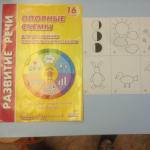How to quickly teach a child to chew
What is your favorite food? Surely, something delicious and forbidden for the slim figure of a modern young mother. What about a juicy veal steak, hearty pork chop or chicken nuggets? Fried fish in batter? And for a side dish - grilled vegetables or country-style fried potatoes? You will definitely like some of this. Moreover, you can eat it! And all thanks to the fact that you have developed chewing muscles, and you mastered the skill of chewing in distant childhood.
You love solid food, unlike a toddler. He does not want to chew, it is better to serve complementary foods from a jar, or let mom turn the food into puree. But chewing is a physiologically necessary process, and the sooner the baby gets used to it, the better. When should you start teaching your child to chew? Why is this needed? How to teach a child to chew at 2 years old? We will try to answer all your questions!
Why is chewing skill necessary?
The digestion process is a complex mechanism well-oiled by nature. And it starts with chewing. In the oral cavity, a specific fluid is produced - saliva. While chewing, it performs a number of functions:
- gluing a lump of chewed food for swallowing (mucin is responsible for this);
- neutralization of many enemy agents that enter the mouth with food (this is what lysozyme does);
- digestion of carbohydrates (this is done by the enzymes amylase and maltase).
Did you know? About 70% of carbohydrates are broken down in your mouth by saliva while you chew. Thorough chewing of food leads to a greater amount of digested organisms of carbohydrates, and this is very important for a mobile small organism.
When the baby is actively chewing, saliva wets the lump of food well, which triggers its further digestion in the stomach. Semi-liquid or puréed food is not so well moistened with saliva, and the body absorbs an order of magnitude less nutrients from it. The conclusion is simple: while the child is not chewing, the body is not able to assimilate everything that you give him 100%.
The chewing process also triggers a chain of digestive reflexes, such as:

- swallowing and moving the food lump along the esophagus;
- secretion of gastric juice with enzymes that can break down exactly what is now in the mouth of the crumbs;
- secretion of bile for the breakdown of fats in the small intestine;
- peristalsis (work) of all parts of the intestine.
As a result, food is digested faster and better - while the child was chewing, the entire digestive system tuned in to active and productive work.
Important! Chewing well stimulates blood circulation in the gums and the correct formation of the jaw. The earlier the baby begins to chew, the more beautiful and smoother his teeth.
Among other things, chewing develops the facial muscles, which are responsible for the formation of correct speech. The sooner the baby starts chewing food, the faster and better he will speak. For children who start chewing after 3 years of age, going to a speech therapist can become a harsh necessity.
When to start learning
The answer is simple: from 3 months. This does not mean that at 3 months you need to give the baby a piece of apple and order it to eat. You just need to prepare the chewing muscles from this age.
With the introduction of complementary foods, it is necessary to offer the baby something to gnaw and chew more often. So you will prevent his unwillingness to eat solid food in the future.
From 1 year old, you can try to feed the baby with food. In case of failure, the experiment can be repeated every other day, and so on until it works out. Having missed a moment in a year, already at the age of 2, it is possible that a problem with selective appetite will appear, which can only be solved at the cost of the child's tears and the nerves of a loving mother. So you can already enter soft boiled food in pieces.
Techniques and methods
There are actually many methods, and they are all focused on a certain age of the baby. The problem of how to accustom a child to solid food first came back to haunt all pediatricians in large quantities, when children's complementary foods appeared on sale. The baby is massively accustomed to the creamy structure of food, and refuses to eat food with lumps.
To avoid whims and tantrums, start chewing as early as possible.

From 3 months
During this period, the child first tries to chew. The crumb drags everything into his mouth and tries to press down with his gums. Don't miss this moment. Even if you see that the teeth will not appear soon, get teethers of different colors and shapes for the crumb. It is advisable to choose a natural color "like an apple" or "like a carrot". The kid will get used to the fact that this color can be dragged into the mouth and chewed, which will simplify further learning.
Chewing on the teether will provide:
- teething gum massage;
- the habit of pressing the object with the gums;
- development of chewing muscles;
- interest in an activity such as chewing.

From 6-7 months
Once you've introduced complementary foods to your baby's diet, get a nibbler. If you ask your mother how she taught you to chew when you were a child, she will probably tell you about a piece of apple in gauze. Nibbler - the same thing, only reusable. They are:
- with silicone mesh;
- with a fabric mesh.
For toothed babies, it is better to take silicone - the fabric clings to rare teeth. The principle of action is that the baby gnaws a nibbler like a teether, but at the same time feels the taste of food. At the same time, it is impossible to accidentally bite off a piece and choke on a banana or boiled carrots, and this is a plus.

From 1 year
You can teach a child to eat solid food at this age in the same way as our parents did. The fact is that before there was no baby food on sale, as well as a blender. Our older generation made mashed potatoes by grinding food through an iron sieve. Like mashed potatoes, but with tiny lumps. Start with it. Later, simply knead the food with a fork, so that each time the lumps become larger and they are larger.

Change the consistency of the dish at the same time. From mashed soups, switch to thicker porridge with lumps. Then you can leave small pieces of vegetables in the serving, gradually increasing the amount.
From 2 years old
At this age, the baby is "chubby" and completely overcomes the adult food in pieces. If at 2 years old a child stubbornly refuses to eat an adult food format, you can try several methods on it:
- Hunger strike. It's cruel, but the effect is quick. Offer your baby food in chunks. Doesn't want to eat? Well done, go for a walk. At the next meal (on schedule and not a minute earlier!), Offer the "adult" meal again. Doesn't want to again? His problems. Sooner or later, the baby forgets about the whims and eats what is offered. As a rule, the child does not last more than one and a half days. The technique has a significant disadvantage - the mother cannot withstand the hysterics and hungry eyes of the child at 4-8 hours of the experiment, and goes on about the manipulator. But such a method is easily implemented by unforgiving fathers.
- Repeat. At 2-3 years old, the baby fancies himself an adult and repeats everything after the elders. Place the child at a common table and eat. Sooner or later, the kid will become curious about what you are eating there so delicious, and he will try, say, a piece of boiled potatoes, imitating adults. 3-4 days of such therapy usually lead to a positive result.
- Role-playing games. Tell the little one that he is a hare, come up with a scenario according to which the hare is supposed to gnaw a carrot or a piece of apple. Children are more willing to eat for some character.

- A positive example. If possible, invite a one-year-old toddler who knows how to eat food in pieces. Cover your holiday tea. Observing how peers eat pieces of solid food, the baby will try to repeat after him, so as not to seem "small". At the same time, he will make sure that all the big kids eat like that, which you need to talk about with the baby before the guests arrive.

- Try not to waste time. Encourage your baby to try to chew something as soon as he shows interest.
- At one year old, many children love to rub something in their mouths. Give the crumb a small piece of bacon or boiled meat - the crumb will chew it like chewing gum, and when it gets tired, it will spit it out.
- If you missed the moment of transition, you will have to argue, convince the baby to try adult food. And this is stress. Therefore, for the period of accustoming to solid food, it is better to postpone other stimuli (for example) for a more favorable time.
- You can not scold or offend the baby (fu, how to eat a little, disgrace). This will still not give a result, and the crumbs will have a complex.
- If you decide on tough measures - stick to the end. Give up now - it will be three times more difficult to make a second attempt.
- The choice of method is yours, but at the age of 2-3 years, a lot can be achieved with a diplomatic approach.
- If your child stubbornly refuses to eat chunks, take them to the doctor. Perhaps these are not whims, it's just that the child has something painful when chewing.
How to teach a child to chew and swallow solid food - video
In this video, the pediatrician talks about when to give your baby food in chunks.
In this video, mom shares her experience on how to teach a child to chew.
Chewing is a very important skill in the life of an adult. It is necessary to lay it from early childhood, even when the baby eats mother's milk or mixture. The sooner you take care of this issue, the less difficulties you will have at an older age.
If you are late, there is nothing terrible about it. Chewing is inherent in man by nature, and with your help, the baby will sooner or later switch to solid food!
When a child starts eating on his own, parents need to know.
Has your baby already switched to solid foods? At what age did you teach your baby to chew? If you have your own way of teaching your baby to chew solid food - share it with us in the comments!






